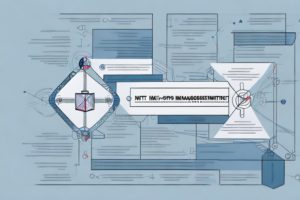What are the 3 components of risk management?

Three interlocking gears to represent the three components of risk management
Effective risk management is a crucial aspect of running a successful business, no matter the industry or size. It is the process of identifying, assessing, and mitigating potential risks that could harm your organization’s ability to achieve its objectives. There are three critical components of risk management:
The importance of risk management in modern business
Before diving into the components of risk management, it’s crucial to understand the importance of this process in modern business. In today’s complex and volatile business environment, uncertainties are unavoidable and can arise from various sources such as strategic decisions, operational gaps, financial disruptions, natural disasters, and cybersecurity threats. Hence, risk management is not an option but a necessity for any business that wants to remain competitive and resilient in the long run.
Moreover, risk management helps businesses to identify potential threats and opportunities, and to develop effective strategies to mitigate risks and capitalize on opportunities. It also enables businesses to comply with legal and regulatory requirements, and to protect their reputation and brand image. By implementing a robust risk management framework, businesses can enhance their decision-making process, reduce costs, and improve their overall performance. Therefore, risk management should be an integral part of any business strategy, regardless of its size or industry.
Understanding the concept of risk and its impact on businesses
Risk refers to the possibility of loss, harm, or negative impact on your business’s objectives, stakeholders, or reputation. Risks can be internal or external, controllable or uncontrollable, and potential or realized. Understanding the concept of risk and its impact on your business is the foundation of effective risk management. It enables you to set clear risk appetite and tolerance levels, prioritize risks based on their significance, and allocate resources to address them proactively.
One of the key benefits of understanding risk is that it allows businesses to make informed decisions. By identifying potential risks and their impact, businesses can evaluate the potential benefits and drawbacks of different courses of action. This can help them to make more strategic decisions that take into account the potential risks and rewards. Additionally, understanding risk can help businesses to be more resilient in the face of unexpected events. By having a clear understanding of the risks they face, businesses can develop contingency plans and strategies to mitigate the impact of any negative events that may occur.
The three critical components of risk management: Identification, assessment, and mitigation
Identification: The first step of risk management is to identify potential risks that could affect your business. This involves conducting a thorough analysis of your internal and external environments, such as your operations, employees, customers, suppliers, competitors, legal and regulatory requirements, and market trends. The output of this step is a comprehensive list of potential risks that require further evaluation.
Assessment: The second step is to assess each identified risk quantitatively or qualitatively to determine its likelihood, impact, and priority. This helps you to prioritize risks and allocate resources based on their severity and impact on your business. Risk assessment can be conducted using various methods such as risk matrices, scenario analysis, sensitivity analysis, or probabilistic modeling.
Mitigation: The final step of risk management is to implement mitigation strategies to reduce the impact of identified risks on your business. Mitigation can take various forms depending on the type and severity of the risk. It can involve risk transfer (e.g., insurance), risk avoidance (e.g., not entering a risky market), risk reduction (e.g., redundancies), or risk acceptance (e.g., assuming the risk as part of doing business). The aim of mitigation is to minimize the likelihood and impact of risks on your business while balancing the associated costs and benefits.
It is important to note that risk management is an ongoing process that requires continuous monitoring and evaluation. This means that you need to regularly review your risk management strategies and adjust them as necessary to ensure that they remain effective and relevant. This is particularly important in today’s rapidly changing business environment, where new risks can emerge quickly and unexpectedly.
Another key aspect of risk management is communication. It is important to communicate your risk management strategies and findings to all relevant stakeholders, including employees, customers, suppliers, and investors. This helps to build trust and confidence in your business and ensures that everyone is aware of the potential risks and how they are being managed.
The role of leadership in implementing an effective risk management plan
Implementing an effective risk management plan requires leadership commitment and involvement at all levels of the organization. Leaders should set the tone from the top by defining the risk culture, providing adequate resources, and establishing clear accountability and communication channels. They should also ensure that the risk management plan aligns with the overall business strategy and is integrated into the day-to-day operations of the organization.
Furthermore, leaders should regularly review and update the risk management plan to ensure its effectiveness and relevance in the ever-changing business environment. This includes identifying new risks and assessing the impact of external factors such as economic, political, and technological changes.
Effective leadership in risk management also involves promoting a culture of transparency and continuous improvement. Leaders should encourage open communication and feedback from employees, and foster a learning environment where mistakes are viewed as opportunities for improvement. By doing so, leaders can create a culture of risk awareness and proactive risk management, which can ultimately lead to better business outcomes and long-term success.
A step-by-step guide to identifying potential risks in your business
Identifying potential risks in your business can seem like a daunting task, but it is a crucial step in effective risk management. Here is a step-by-step guide to help you identify potential risks in your business:
- Conduct a thorough analysis of your business environment, including internal and external factors.
- Identify potential risks associated with your business operations, such as production, logistics, marketing, HR, finance, and IT.
- Identify potential risks associated with your stakeholders, such as customers, employees, suppliers, shareholders, competitors, and regulators.
- Identify potential risks associated with your industry or sector, such as technological disruptions, market changes, regulations, and geopolitical risks.
- Compile a comprehensive list of potential risks and categorize them based on their impact and likelihood.
How to assess the likelihood and impact of each identified risk
Assessing the likelihood and impact of each identified risk is essential to prioritize them and allocate resources accordingly. Here are some methods for assessing likelihood and impact:
- Risk matrices: A risk matrix is a tool that helps you assess the likelihood and impact of identified risks based on predefined scales. The output of a risk matrix is a risk score that enables you to prioritize risks and allocate resources accordingly.
- Scenario analysis: Scenario analysis involves developing hypothetical scenarios that simulate the potential impact of identified risks on your business. This helps you assess the likelihood and impact of risks and develop contingency plans accordingly.
- Sensitivity analysis: Sensitivity analysis helps you assess the impact of identified risks by testing how changes in variables such as sales, costs, or prices would affect your business operations and financial performance.
- Probabilistic modeling: Probabilistic modeling involves using statistical methods to assess the likelihood and impact of identified risks based on historical data or assumptions. This helps you make informed decisions based on probability distributions of risk outcomes.
Mitigation strategies: How to reduce the impact of identified risks on your business operations
Mitigation strategies aim to reduce the impact of identified risks on your business operations and ensure business continuity. Here are some common mitigation strategies:
- Risk transfer: Risk transfer involves transferring the risk to a third party, such as an insurance company. This is suitable for risks that are too costly to manage internally or cover independently.
- Risk avoidance: Risk avoidance involves avoiding the risk altogether by not engaging in activities that expose your business to potential harm. This is suitable for risks that cannot be mitigated or managed reasonably.
- Risk reduction: Risk reduction involves taking steps to reduce the likelihood or severity of identified risks. This includes implementing redundancies, diversifying suppliers, or strengthening cybersecurity measures.
- Risk acceptance: Risk acceptance involves acknowledging the risk and accepting the consequences as part of doing business. This is suitable for risks that are unavoidable or necessary to achieve business objectives.
The importance of ongoing risk monitoring and evaluation
Risk management is not a one-time event but an ongoing process that requires continuous monitoring and evaluation. This helps you keep track of the effectiveness of your risk management plan, identify new risks or changes in existing risks, and adjust your mitigation strategies accordingly. Ongoing risk monitoring and evaluation also enable you to learn from past experiences and improve your risk management practices over time.
Case studies: Successful examples of risk management in action
There are many successful examples of risk management in action across various industries and sectors. For example, Johnson & Johnson’s swift and transparent response to the Tylenol tampering crisis in 1982 is considered a gold standard of crisis management. Another example is Toyota’s adoption of the Lean Six Sigma methodology to identify and mitigate risks in its production processes, resulting in significant cost savings and quality improvements.
Common mistakes to avoid in your risk management plan
While developing a risk management plan, there are some common mistakes that you should avoid:
- Ignoring low probability risks
- Underestimating the impact of identified risks
- Over-reliance on a single mitigation strategy
- Failure to communicate the risk management plan to all stakeholders
- Lack of leadership commitment and involvement
Tools and resources for effective risk management
There are various tools and resources available to help you implement an effective risk management plan. Some of these include:
- Risk management software: This is specialized software that automates the risk management process and provides real-time monitoring and reporting of identified risks.
- Risk management frameworks: These are systematic and standardized approaches to risk management that provide guidance on best practices, governance, and compliance.
- Professional associations and certifications: There are many professional organizations and certifications that offer training, networking, and resources for risk management professionals, such as the Risk Management Society (RIMS) or Certified Risk Management Professional (CRMP).
Future trends and innovations in the field of risk management
The field of risk management is constantly evolving, driven by technological advancements, regulatory changes, and emerging risks. Some future trends and innovations in risk management include:
- Artificial intelligence and machine learning: These technologies can help automate risk assessment, identify patterns, and provide real-time insights into potential risks.
- Quantum computing: Quantum computing can enable more accurate and faster modeling of complex risk scenarios, such as market volatility or cyber threats.
- Integrated risk management: Integrated risk management involves aligning and consolidating various risk management frameworks and functions, such as ERM, compliance, cybersecurity, and business continuity.
How to integrate risk management into your overall business strategy
Integrating risk management into your overall business strategy involves aligning your risk management plan with your business objectives, values, and culture. This requires the involvement of all stakeholders and a clear understanding of the risks and opportunities associated with your business. Key steps to integrating risk management into your overall business strategy include:
- Developing a risk-aware culture
- Aligning risk management with your business objectives
- Integrating risk management into decision-making processes
- Establishing clear roles and responsibilities for risk management
- Regularly updating and communicating the risk management plan to all stakeholders
Conclusion: Why every business needs a robust risk management plan
In conclusion, every business needs a robust risk management plan to identify, assess, and mitigate potential risks that could harm its ability to achieve its objectives. Risk management is a continuous and dynamic process that requires leadership commitment, stakeholder involvement, and ongoing monitoring and evaluation. By implementing an effective risk management plan, businesses can not only mitigate potential losses and disruptions but also capitalize on opportunities and enhance their overall resilience and competitiveness.



